The Notre Dame team has kindly made the slides from their opening presentation available as PDF (93 pages, 5.8MB). You can watch a video of Notre Dame Professor Philip Bess giving this presentation and read his handout. Below are selected slides that particularly caught our attention.
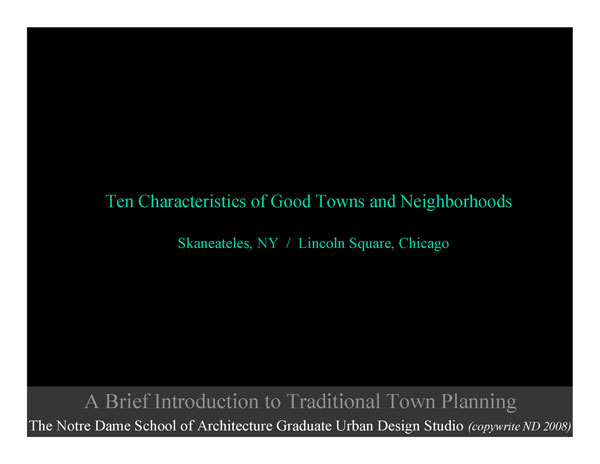
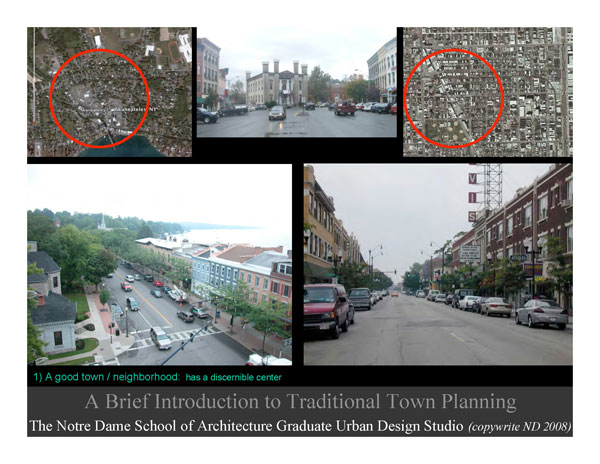
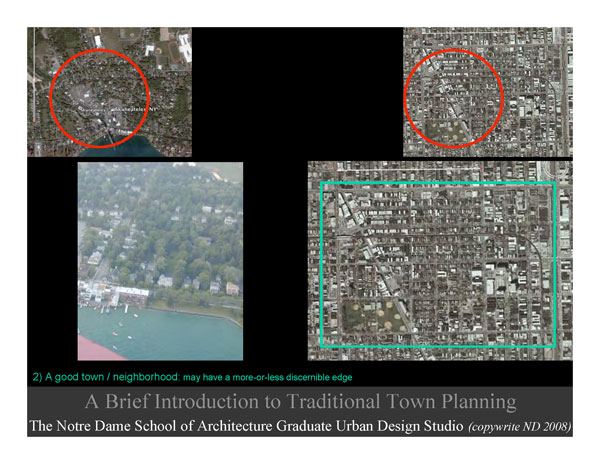
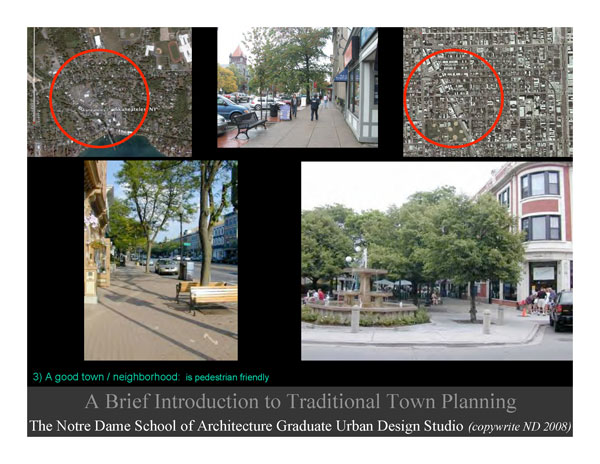
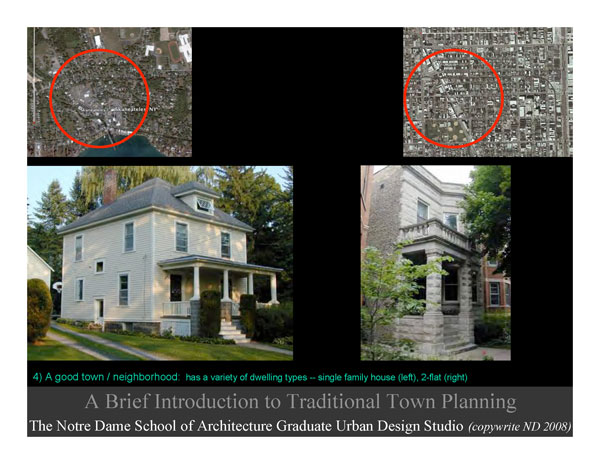
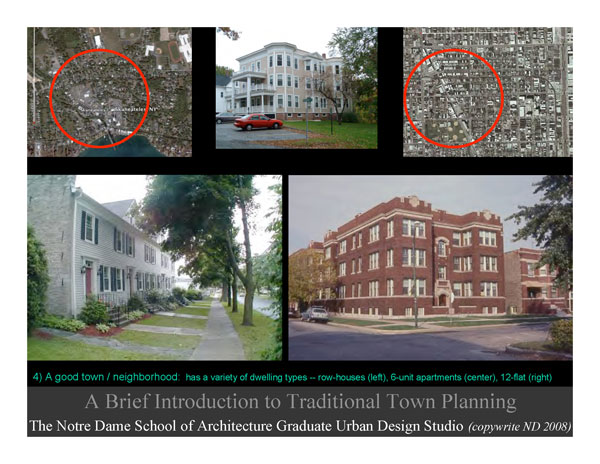
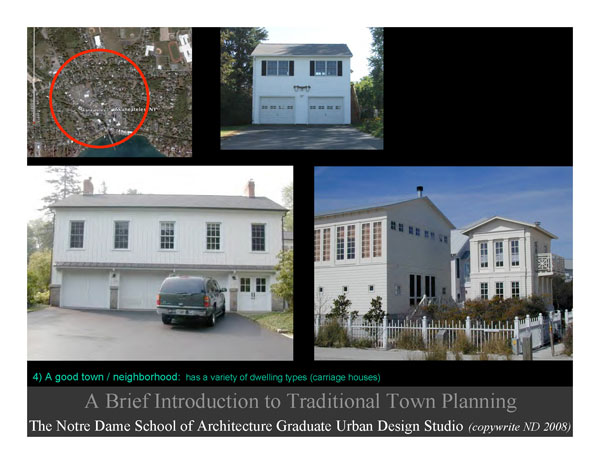
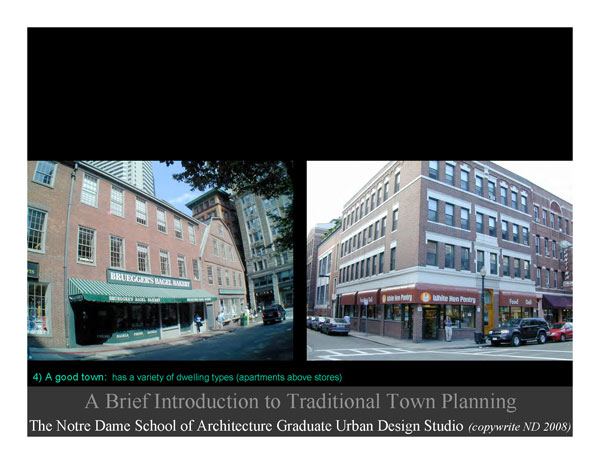
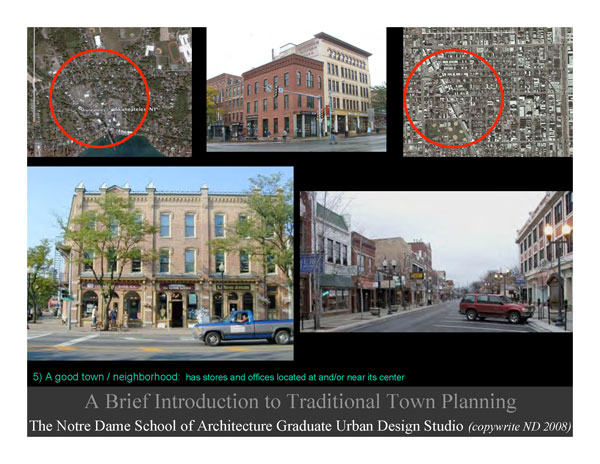
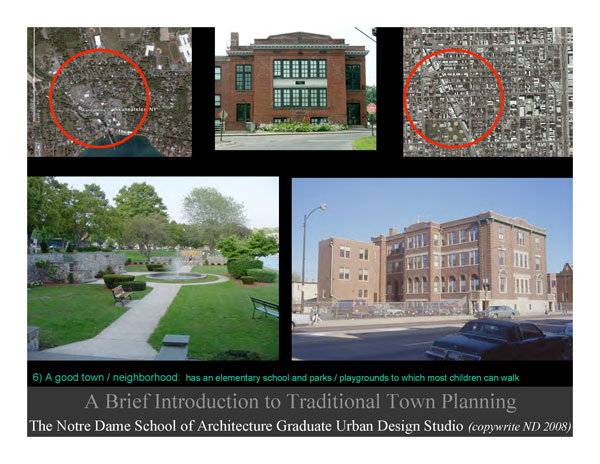
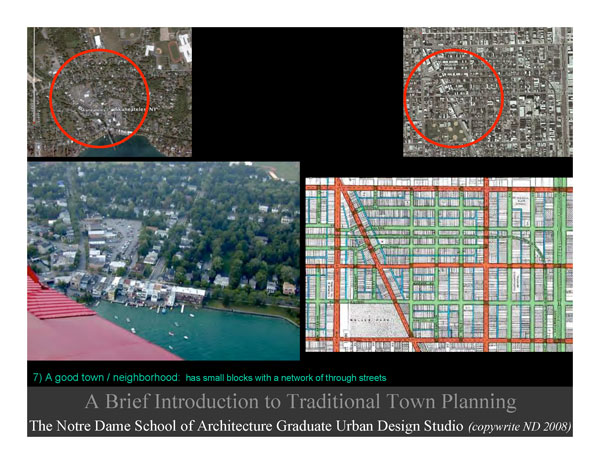
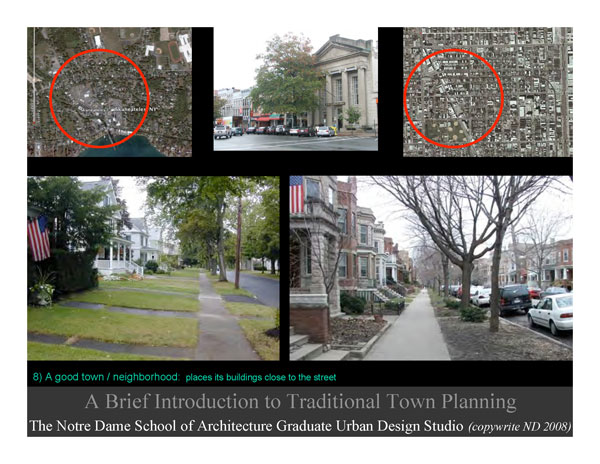
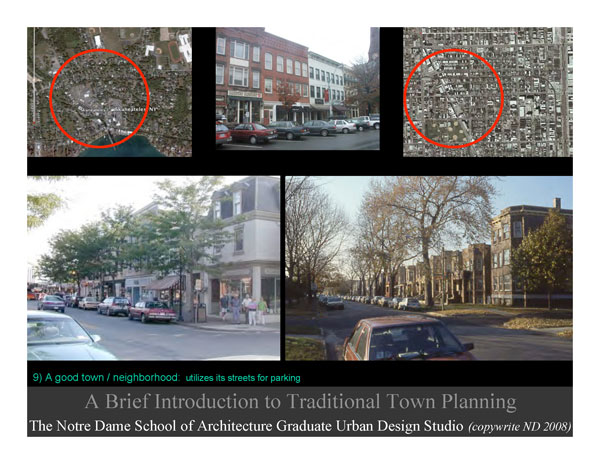
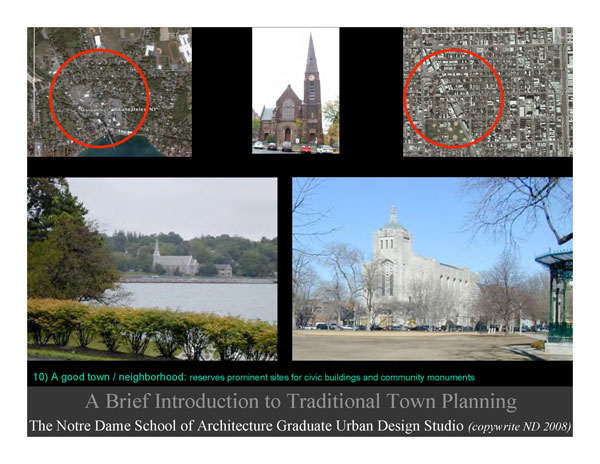
The two slides below underscore how zones of dramatically different density can abut each other, as in the case of the famous St. Andrews golf course and Manhattan’s Central Park, both of which border (and enhance) densely developed areas. On a more modest scale, the woods behind North Street offer a pleasant contrast to the developed areas around them.
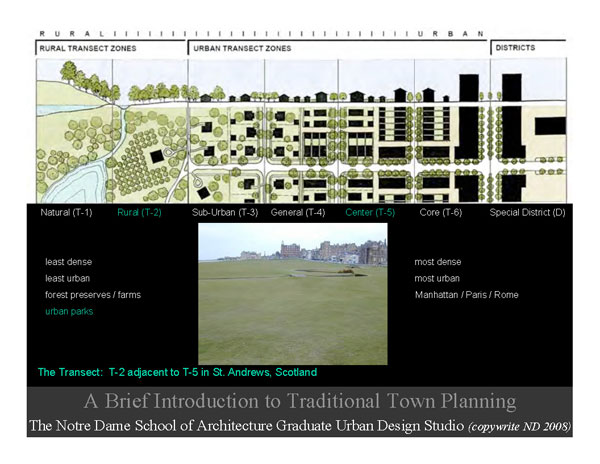
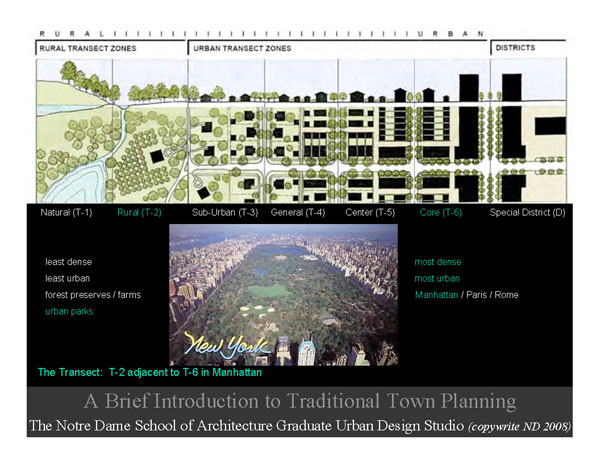
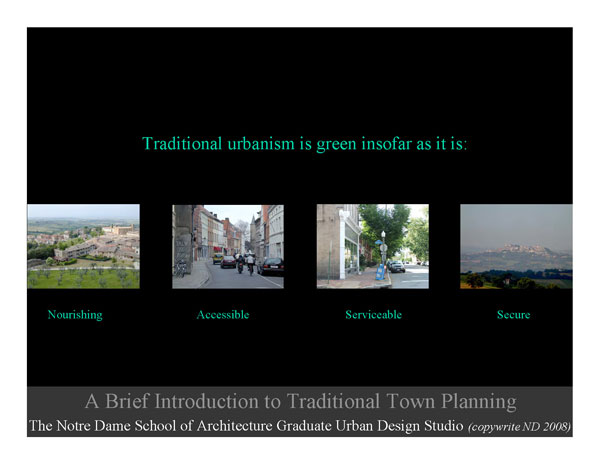
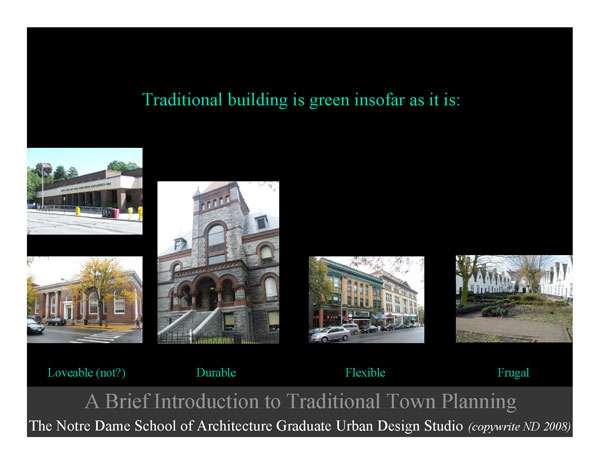
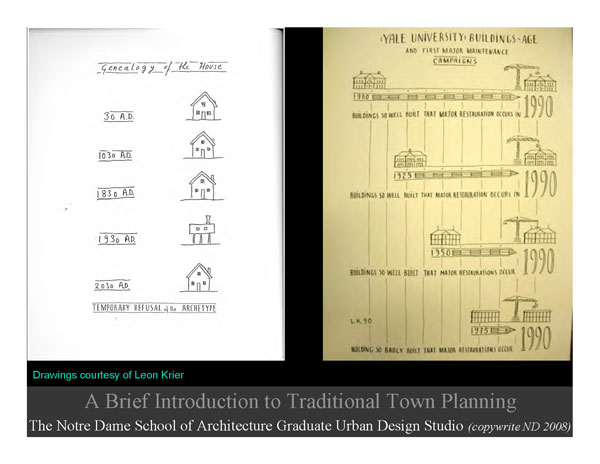
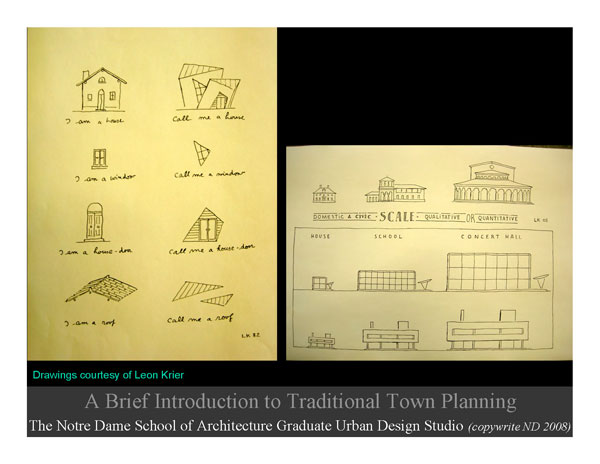
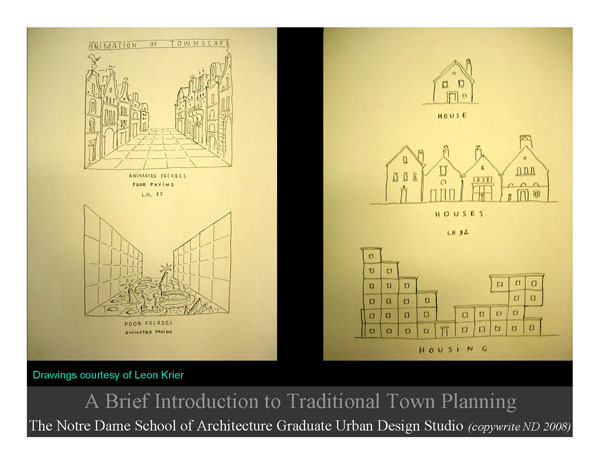
In choosing to live where we do, most residents of the North Street neighborhood like being in a traditional urban neighborhood that’s walkable, close to downtown, and has some mixed uses (light retail and commercial). However, we caution planners against having overly optimistic assumptions about maximizing density and minimizing car use. These two articles elaborate:
Smart Growth Winners (Rich People) and Losers (Other People)
Smart growth is great if you are an upscale professional, preferably
without children, who can score a relatively large apartment fairly
close to work. It’s a lot less fun for the majority trying to cram your
family into four or five rooms… Smart growth is great if you can
afford to have everything you buy delivered, or are in excellent
physical condition with a physically undemanding job; it is not so
great if you have to come home from your shift at the nursing home to
lug groceries a quarter-mile down the street, and then up three flights
of stairs. Smart growth is great if you can afford to eat in the
plethora of restaurants; it is not so enjoyable if you have to scrape
up an extra 20% for the ingredients in tuna casserole. Smart growth is
great if you have a nanny to take the kids to the park during the day;
it is not so terrific if you have to choose between wasting several
precious hours standing around the playground, or letting your kids
languish inside. Smart growth is great if you can afford taxis when you
need them; it is not so good if you are forced to take three buses to
get somewhere you really need to be. Smart growth is great if your
family members are all affluent enough to take care of themselves; it
is not so fulfilling when you have to shove your ailing mother into the
kids room when her resources fail.People Cannot Live on Boutiques Alone: The Myth of Northwest 23rd
Portland’s Northwest 23rd Avenue is lined with classy shops and
restaurants. When residents of the Portland area ask planners for an
example of their vision of a high-density, mixed-use area, they are
often told to look at Northwest 23rd, where residents have supposedly
learned “to walk and ride transit rather than drive.”As shown on the Thoreau Institute’s Oak Grove tour,
however, the real Northwest 23rd is jammed with cars throughout the
day. This is because local residents are not numerous enough to support
the shops on the street, so those shops have worked hard to attract
people from throughout the area. Nearly all of those people drive to
get there…Nor do the people who live in this census tract rely solely on transit,
bicycles, and shoe leather for transport. Indeed, one of the major
problems in the area is lack of parking, since shop customers
frequently park in front of residences, and the residents have no place
to park their own cars……if the goal is to create streets of shops that primarily serve the
local pedestrian neighborhood, then Northwest 23rd is not the model. In
fact, outside of New York City and possibly a few other pre-auto cities
such as Boston and San Francisco, there is no model for such a street
anywhere in the U.S. It is simply not possible for a street of shops to
provide the same services, goods, and value provided by giant Safeway
or Kroger supermarkets, Office Depots, Wal-Marts, and other growing
categories of big-box or warehouse stores…
See also:
Randal O’Toole: “Dense Thinkers” (Reason Magazine, January 1999)
…most central cities…were built in an age when primitive transportation and communications dictated high densities; people had to live near one another. The “decline” of cities that officials worry so much about is due to the fact that cars, telephones, and electricity make it possible for people to live in lower densities–and most choose to do so.
Today’s Urban Planning Debates Echoed in Northampton’s Near Past
Condo Monotony: The Future of Ward 3?
Springfield Works on Infill Housing Design Guidelines; Residential Design Presentation by Dietz & Company
The City of Springfield conducted a housing design forum on June 26 to gather public input. Noting this the day before in The Springfield Intruder, Bill Dusty writes,
Let’s hope the City acts on some of the recommendations. I’ve visited
many neighborhoods where oddly-fitting housing designs have made a
street look disconnected – duplexes next to historical houses, for
example, on Eastern Avenue. Too often, it seems, design takes a back
seat to rapid construction because of the City’s apparently eager
desire to rake in real estate tax dollars as soon as possible.
…a Residential Design Presentation prepared for Springfield by
Dietz & Company…touches on some of the issues we’ve raised
before, notably infill developments that don’t mesh well with their surrounding neighborhoods. The presentation may also be downloaded as a PDF.